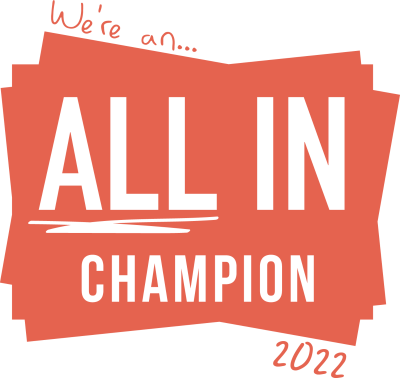DISABILITY MUST HAVE A PROMINENT PLACE ON ADLAND’S D&I AGENDA
Having the right people feeding in to ensure an authentic output is a win-win for inclusivity and any creative agency. Written by Ewan Paterson, Chief Creative Officer at MullenLowe Group UK, for Campaign.
There have been encouraging signs recently that diversity of ability is finally being given a place on the ad industry to-do list. The question I, and many people, have been asking is this: “Is disability really on that agenda?”
So it was great to read Campaign’s recent feature calling for diversity to include disability in marketing. It is one of very few you’ll find in our industry’s press on this subject, and we need to keep the conversation going.
My son has diplegic cerebral palsy – a physical disability that means he doesn’t walk like the majority do. And I know the chances of him entering and succeeding in our industry will be hugely limited by his cerebral palsy.
Does a disability mean you can’t contribute to a creative industry like ours? No, of course it doesn’t. In fact, my son has inherited his father’s love of a pun: a sure-fire asset in the communications industries.
When I think of the talent we are missing out on when we turn our backs on disabled people, I’m reminded of the wonderful ad for the Royal National Institute for the Deaf by Derrick Haas and Howard Fletcher. A picture of a brain with the headline: “It works perfectly well without ears.”
I’d advise any budding creative wanting to learn their trade to look at it. It’s the perfect partnership of image and headline working together to deliver a thought in a hugely powerful way.
I’d advise anyone, in any industry, in any walk of life to look at it to remind themselves – or educate themselves – that disability has nothing to do with intelligence.
Did Franklin D Roosevelt’s need for a wheelchair reduce his ability to lead a nation out of economic depression? No.
Did Van Gogh’s mental health issues make him less creative? No.
In both cases what made them “different” probably made them stronger. And meant they could offer society more.
Campaign’s feature highlighted that the likelihood of you leaving your ad industry job if you are disabled is almost three times that of the average employee. And for those who do stay in work, the pay gap has widened to nearly £4,000 per year*. Surely if we can make remote or hybrid working work in the midst of a pandemic, we can commit to a 0% ability pay gap?
As well as fair pay, what if we held ourselves accountable for driving inclusivity at every stage of the creative process? Having the right people feeding in to ensure an authentic output is surely a win-
win situation for inclusivity and any creative agency.
Many companies took the gender pay gap requirements and decided to use it as a real opportunity for transparency around career opportunities for minority communities, but we still see so little evidence of this accountability for diversity of ability.
What steps can we take to make ideation fully inclusive – not just as a future goal but Every. Single. Time? And what if this became the standard? There would be better opportunities for companies and brands to make a truly meaningful impact. It is time to make inclusivity more than just an office buzzword. It is one thing to sign up to charters or pay for logos on stuff. It is quite another to hire someone who is disabled.
At MullenLowe Group, we are determined to practise what I am preaching here. We are taking initial steps to identify our existing disability champions. It is our belief that there are three “i”s to undertake:
- Investigate the disabilities your company already represents across team members – hold a lens to your business as a starting point for accountability
- Inquire about what is helping or hindering their career; seek external advice on the best ability-inclusive practices for your particular kind of business
- Include colleagues of diverse abilities from the very start of the creative process and make a firm commitment to bringing diverse abilities to the forefront of the decision-making.
As someone who has a son with a disability, I can see first-hand the creative potential that agencies are currently missing out on. So, please, let’s all keep fighting for increased diversity and inclusion.
And please let’s make sure the D and I of disability are central to that fight.
